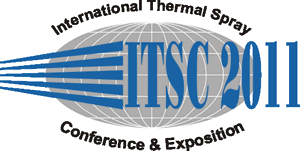
|
3028 |
|
Study of oxidation behavior of CoNiCrAlY bond coatings deposited by cold gas dynamic spraying |
|
Abdullah Cahit Karaoglanli / Bartin University, Engineering Faculty, Metallurgical and Materials Engineering Department, Turkey Ahmet Turk/ Sakarya University, Department of Metallurgical and Materials Engineering, Turkey Ismail Ozdemir/ Bartin University, Department of Metallurgical and Materials Engineering, Turkey Kazuhiro Ogawa/ Tohoku University, Fracture and Reliability Research Institute, Japan Funda Ak Azem/ Dokuz Eylul University, Department of Metallurgical and Materials Engineering, Turkey Thomas Lampke/ Chemnitz University of Technology, Institute of Materials Science and Engineering, Germany Thomas Grund/ Chemnitz University of Technology, Institute of Materials Science and Engineering, Germany Fatih Üstel/ Sakarya University, Department of Metallurgical and Materials Engineering , Turkey |
|
Thermal barrier coatings are protective coatings, which are used in order to protect combustion chamber of the advanced turbo engines and the parts in its hot sections such as turbine against negative impacts of hot gases. Thermal barrier coating (TBC) systems are generally composed of a top coating made of ceramic that is applied onto the base substrate super-alloy based and that provides thermal insulation, and a bond coating (BC) that makes the ceramic top coating adhere to the metallic coating and protects the base substrate against oxidation and also thermally gradient oxide (TGO) coat which occurs during the coating process and advances on the service by means of bond coating getting oxide. In this study, TBCs that consist of a typical bond layer / top layer system (CoNiCrAlY bond layers and YSZ top layers) are deposited. The metallic bond coating is applied via Cold Gas Dynamic Spraying (CGDS); the ceramic top coating via Atmospheric Plasma Spraying (APS). Investigations are done concerning the oxidation behavior of this TBC system at 1100 °C in normal atmosphere for different periods. In order to rate the adaptability of the CGDS bond coatings in industrial processes the formation of the TGO is investigated optically after different exposure times. The microscopic investigations by optical and scanning electron microscopy are complemented by energy dispersive X-ray spectrometry as well as X-ray diffractometry. Oxidation behaviors, microstructural evaluation and TGO formations discussed and evaluated. |